
The Canadian Provost Corps
1946 - 1968
Web Equipment 1951 Pattern
And Associated Items
The end of the Second world War left Canada with large stocks of 1937 Pattern web equipment. Stocks of equipment were sold off as surplus or gifted to European Allies and by 1949 Canada was involved in user trials of new types of Canadian and American equipment. The Korean War ended the proposed Americanisation of the Canadian Army and Canada embarked on wide ranging program of modernisation based primarily on Canadian designs.
In 1951 a new pattern of web equipment was approved for the Canadian Army, known as Web Equipment 1951 Pattern (WE'51) . In concept it was similar to the 1937 Pattern, however many features were drawn from American web designs. It was made in a tightly woven green (Olive Drab No. 7) cotton web with oxidised blackened brass fittings. Upper and lower rows of eyelets or grommets were used for securing equipment items. A center row of eyelets were used to secure the the length of the belt.
WE'51 was still in production after the introduction of WE'64 and modified components with some of the features of WE'64 was being made by Textile Industries Limited as late as 1971. WE'51 was used by the Regular Force well into the late 1960s. It was on issue to the Reserves until the adoption of Web Equipment 1982 Pattern.
With the exception of the pistol holster, brace and brace attachment, WE'51 was not whitened for use by Provost.
Although WE'51 was in production during the Korean War, it was not issued to troops in Korea in any quantity until late 1953, by which time the major fighting was over.
At the time of this writing, (2010) WE'51 is still issued to inmates in the Military Prison in Edmonton as it is difficult and time consuming to clean and maintain.
The basic set of 1951 Pattern Equipment for soldiers armed with a rifle or submachinegun consisted of:
Waistbelt
pair of Braces
pair of Ammunition Pouches
Mess Tins and Mess Tin Carrier
Canteen, Canteen Cup and Carrier
Bayonet Frog and Bayonet
Small Pack
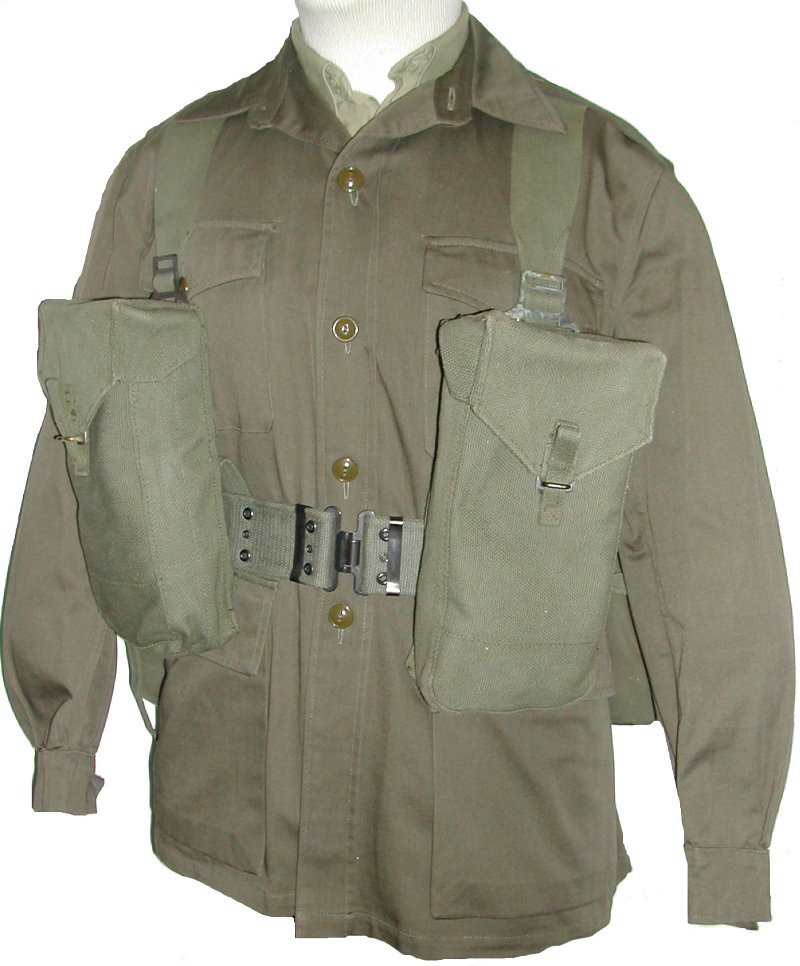
Front view of the basic set showing two basic pouches set in the upper position.
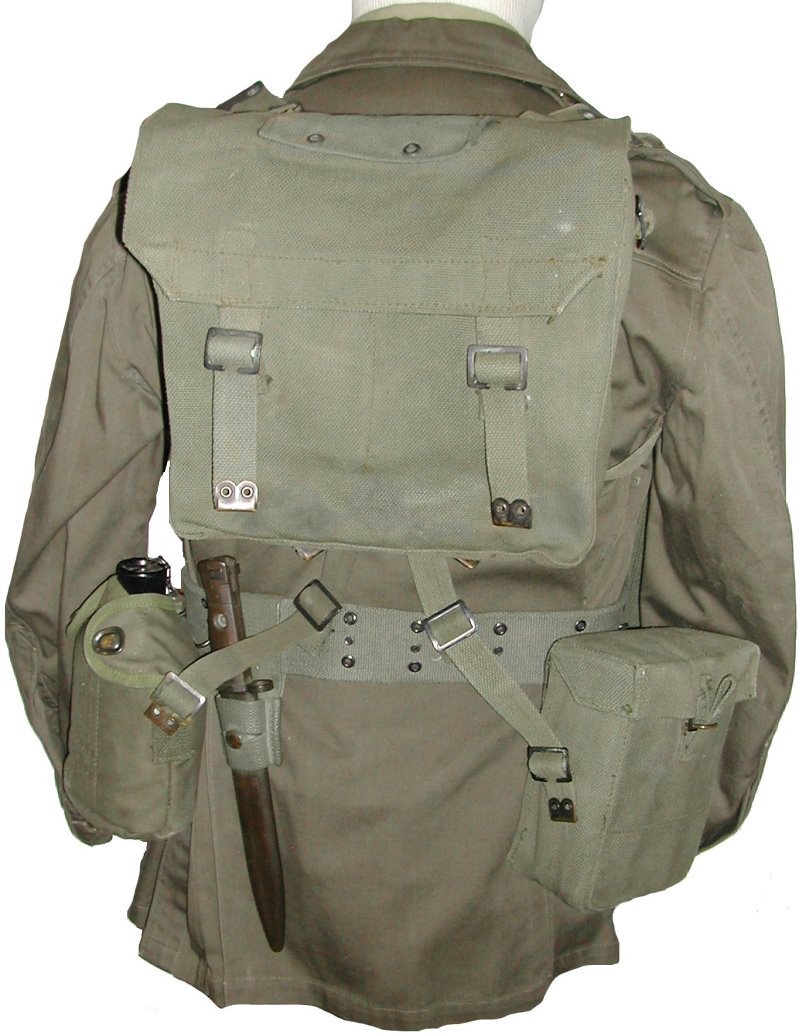
Back view of the basic set as worn with the small pack.
WE'51 Waistbelt

Although the general design and the buckle was similar to the WE'37, the American influence is evident in the three rows of eyelets. The top and bottom rows were for the securing of equipment. The center row was for adjusting the size and securing the basic pouches in place.
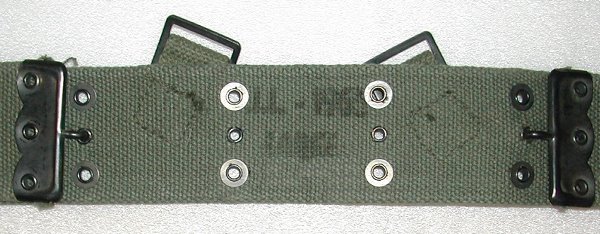
Typical manufacturer's markings on a large size waistbelt made by T.I.L. (Textile Industries Limited) in 1965.

The location and pattern of the rear buckles for attaching the braces were identical to those on the WE'37 waistbelt.
Modified WE'51 Waistbelt
In 1971 new modified articles of WE'51 were produced. These pieces of equipment were produced by Textile Industries Limited and incorporated some of the features of WE'64 ie: plastic buckles and hook and loop fasteners.
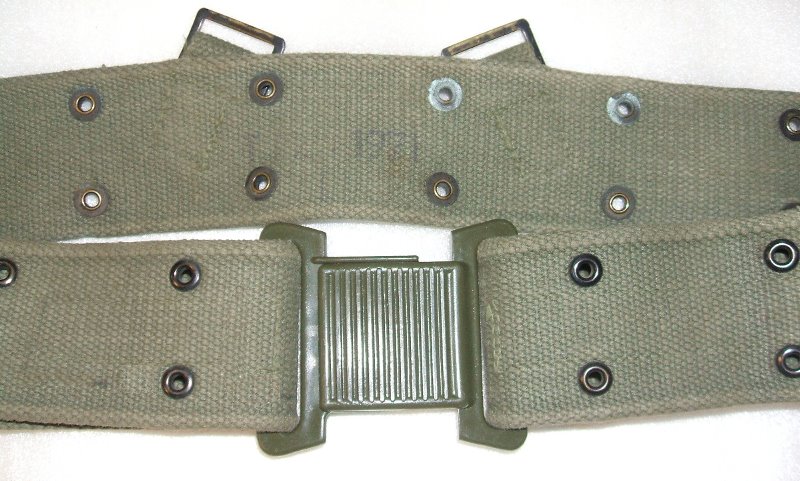
Note the absence of the center line of holes for adjusting the size and the WE'64 waistbelt buckle.

Hook and loop strips now secure the ends of the belts and adjust the size.
WE'51 Braces
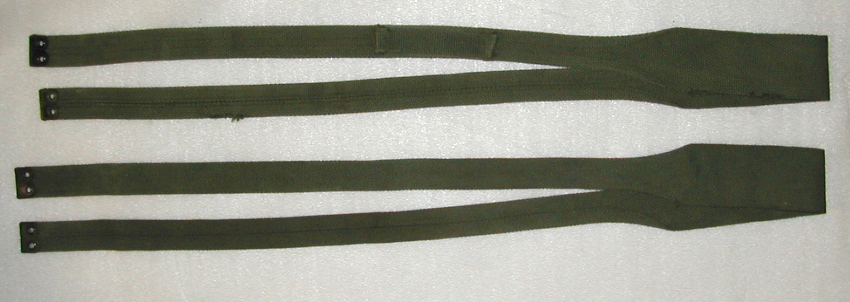
The pattern of the brace was similar to that of the WE'37 brace but were made of much thinner web. These were issued in a set consisting of a left (top) and right brace.
WE'51 Ammunition Pouch

The Ammunition or Basic Pouch was slightly larger than the 1937 Pattern and as with the WE '37 Pattern Pouch was designed to hold Lee Enfield Rifle, Bren or Sten magazines, grenades or 2 inch mortar bombs. Following the adoption of the FN C2 Light Automatic Rifle, it was found that four 30 round FN C2 magazines would fit, albeit tightly, in the pouch.

Rear view of the Ammunition Pouch. The belt was run through either of the pairs of loops, allowing the pouch to be worn high or low on the belt.

The Ammunition Pouch in place on the waistbelt, with the brace attached.
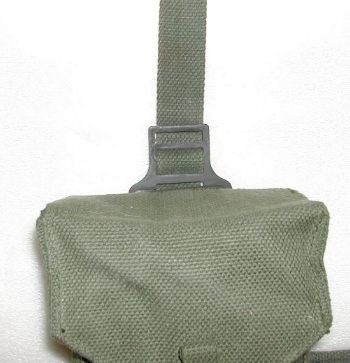
Detail of the method of attaching the brace.
WE'51 Water Bottle (Canteen) And Carrier
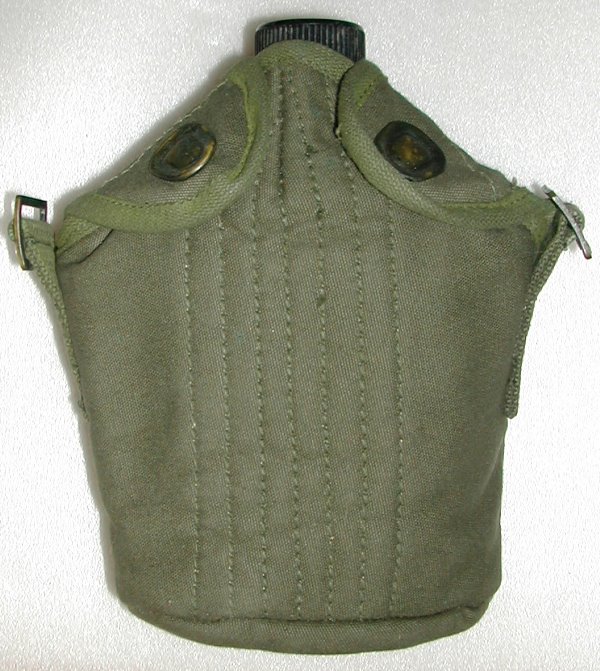
WE'51 Canteen Carrier. The design of the carrier is based on the American M1910 Canteen Cover. The distinguishing features are the snap fasteners and the tab and buckles on the sides for attaching the ends of the Braces or securing straps. Photographic evidence indicates that in a few instances the WE'37 Water Bottle was worn in the WE'51 Carrier.
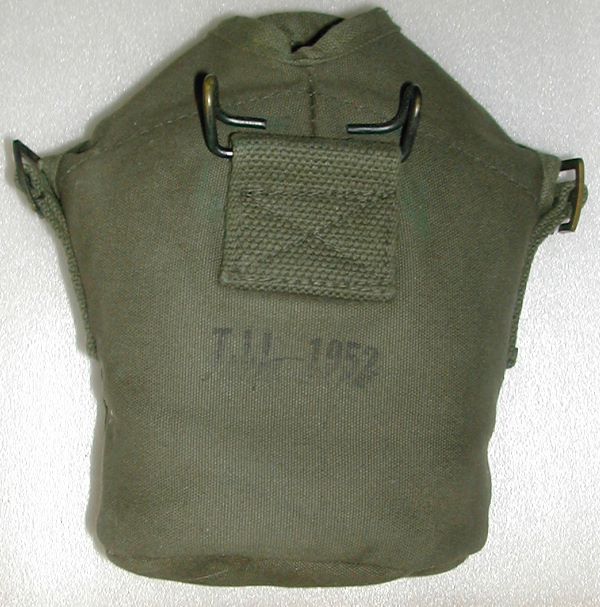
Rear view showing the wire clip attachments and the manufacturer's markings.
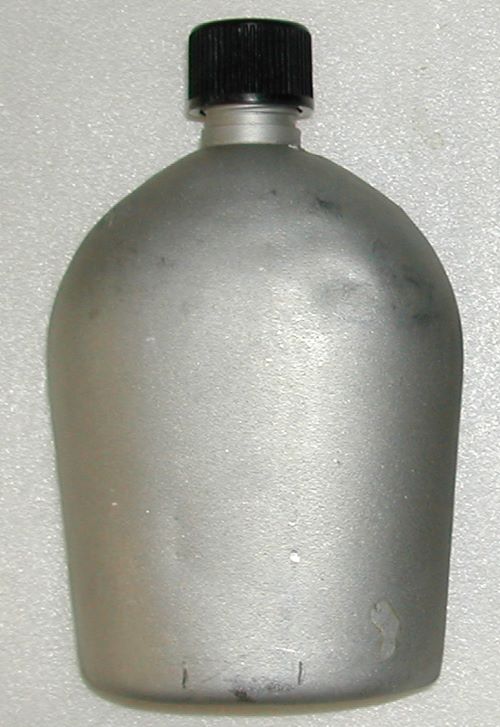
WE'51 canteen. American designed, Canadian manufactured, used until the early 1960s.
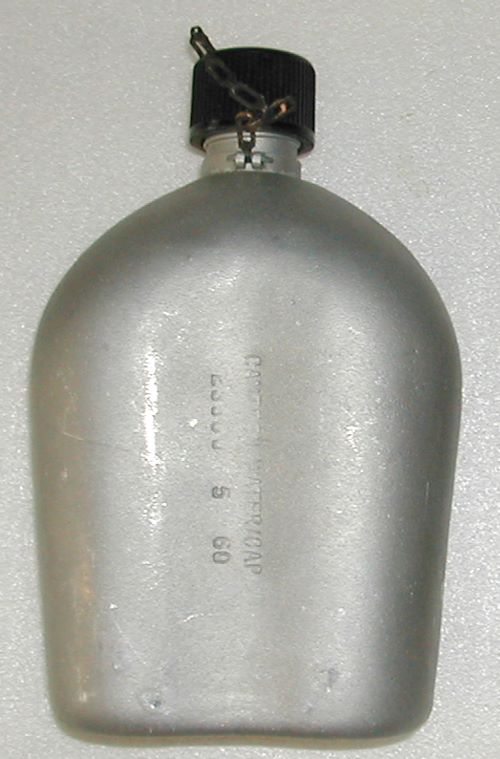
Rear view of the Canteen showing the manufacturer's markings. Made by ESSCO in May 1960.

Bottom view showning a Canadian Military Inspection Services acceptance stamp.

The American military developed a plastic form of canteen during the Second World war with a limited degree of success. In conjunction with the US, Canada developed and approved a Canadian Pattern of plastic canteen in 1960. This pattern was adopted by the U.S. and introduced into American service as the M1962. The Canadian Plastic Canteen was also issued with WE'64 and early issues of WE'82 equipment.

Early Canadian production canteen dated 1960.
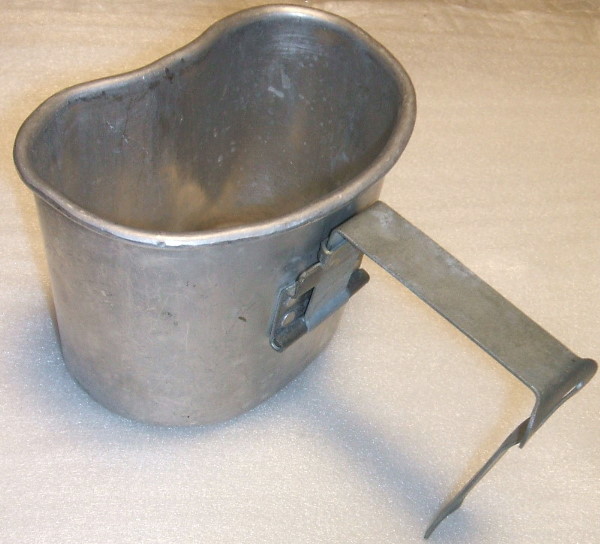
Second World War vintage M1910 pattern canteen cup. Several minor variations exist.
WE'51 Messtins And Carrier
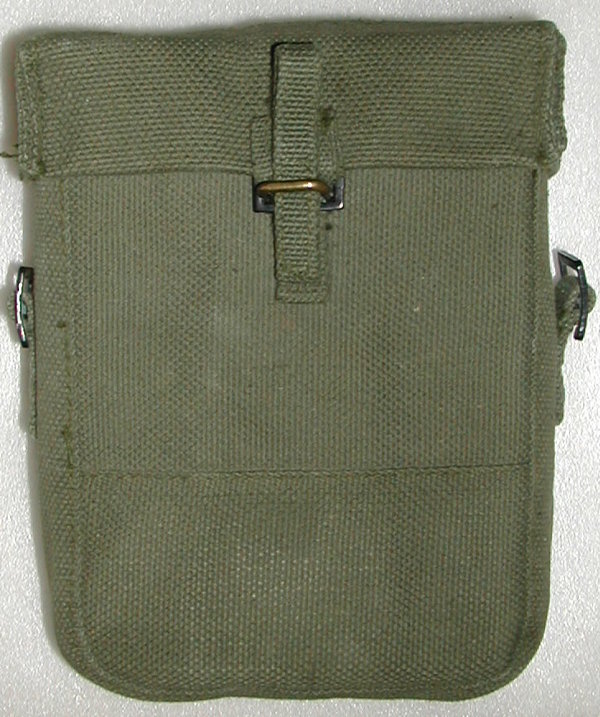
Rectangular messtins of Second World War pattern were carried in a new pattern of carrier. As with the Canteen Carrier, tabs and buckles were fitted on the sides for attaching the ends of the Braces. A Knife, Fork and Spoon (KFS) Set was carried inside the messtins or stuffed between the messtins and the inside of the carrier. The KFS was normally wrapped in a ration or messtin bag or a rag to prevent rattling.
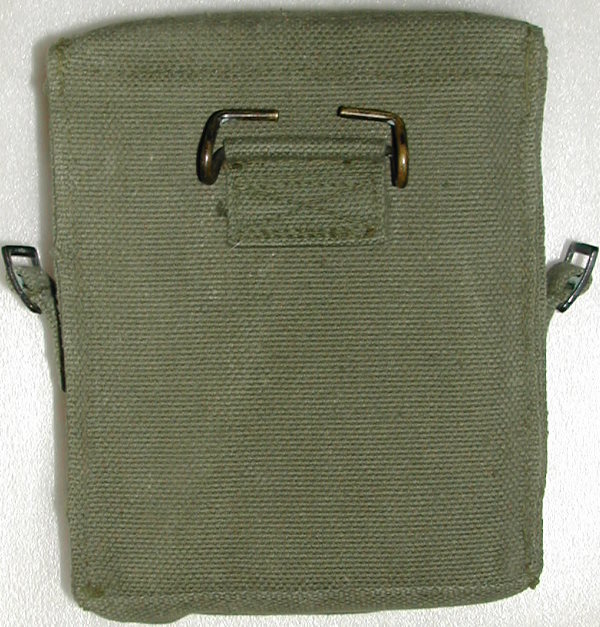
Rear view showing the wire hook for attachment to the waistbelt.
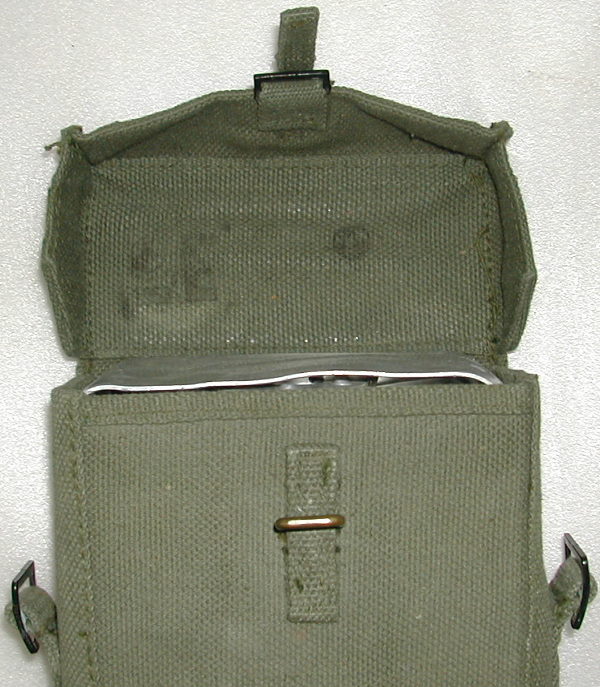
Top flap open, revealing the messtins.

This very late manufacture messtin carrier exhibits some of the features of the WE'64 web, ie: plastic buckles and tab, but has the wire hook belt attachment of WE'51.

Rear view of the late pattern messtin carrier.

Flap open showing the manufacturer's markings indicating that this piece of equipment was made well after the adoption of WE'64.
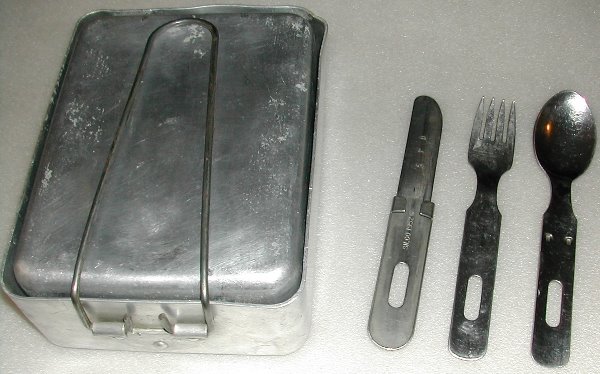
Messtins and Knife, Fork and Spoon (KFS) Set. The KFS set is C/Arrow marked and made by SILCO in 1952.
WE'51 Bayonet Frog
The WE'51 Bayonet Frog was similar to that issued with WE'37 but the web material was dark green rather than khaki. Two variations of this frog were made, as during the service life of WE'51 three patterns of bayonet were issued. The bayonets were the No4 for the No.4 Lee Enfield Rifle, the X2E1 trials bayonet for the FN EX 1 and EX 2 rifles and the C1 bayonet for the FN C1 Rifle. Both the No4 and X2E1 bayonet scabbards fit the WE'51 frog nicely, needing no modification. Upon the adoption of the FN C1 rifle and bayonet in 1955, a new wider pattern of frog was adopted.

A No4 Mk II bayonet for the No4 Mk1* (Lee Enfield)rifle .

The X2E1 Bayonet (left) for the 1954 EX Series Rifles and the C1 Bayonet for the FN C1 rifle adopted in 1955.
WE'51 Set for Officers And Certain NCOs
The basic set issued to officers and certain soldiers armed with the pistol consisted of:
Waistbelt
pair of Braces
pair of Brace Attachments
Pistol Holster
Compass Case
Binocular Case
A Canteen Carrier and Messtin Carrier were added as required. Officers armed with a submachinegun usually added one or more Ammunition Pouches to their equipment in order to carry spare magazines.
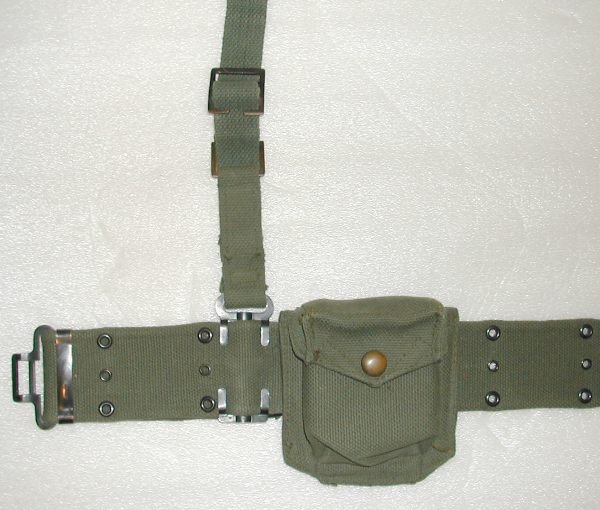
View of the method of attaching the compass case and brace attachment to the waistbelt.
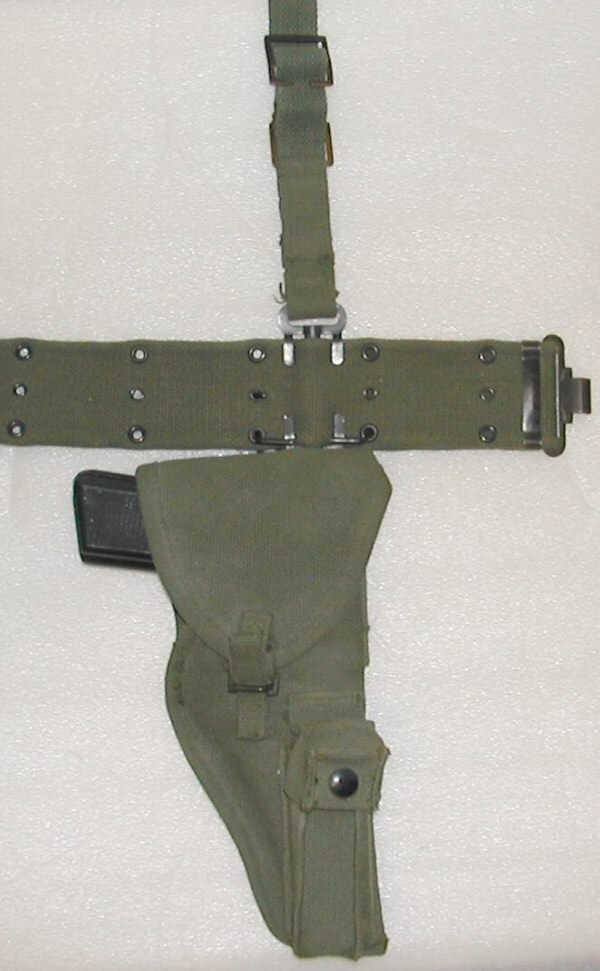
View of the method of attaching the pistol holster to the waistbelt.
WE'51 Binocular Case
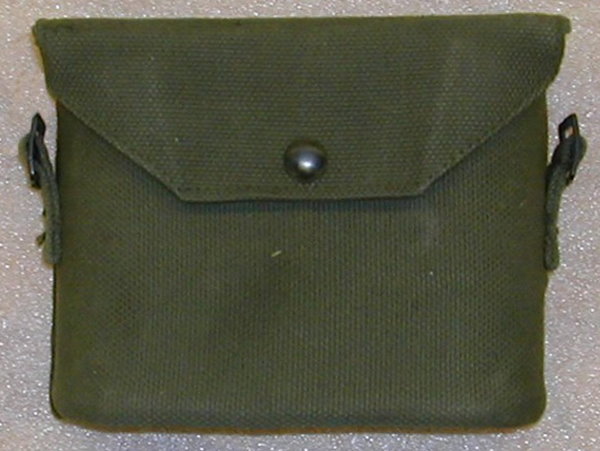

The Binocular Case was similar to the WE'37 case and could either be worn on the belt or slung by means of a strap attached to buckles on the sides.

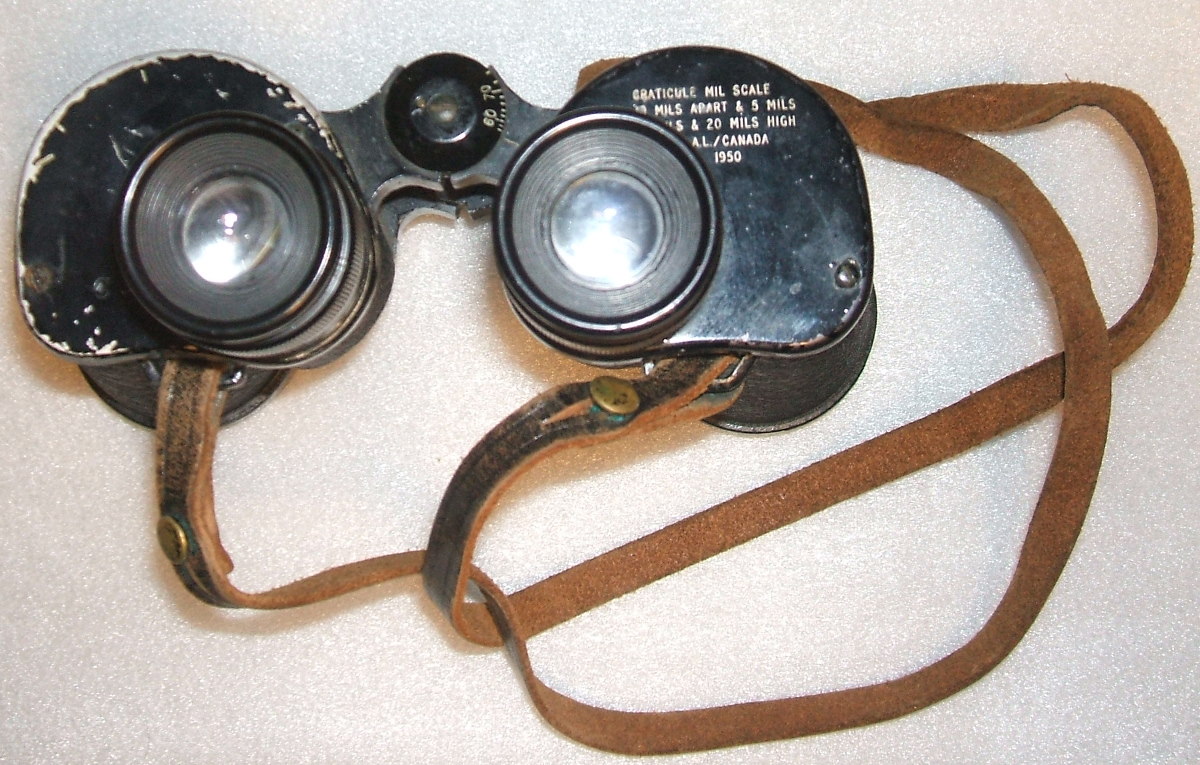
WE'51 Compass Case

The compass case was similar to the 1937 Pattern case and was stiffened and lined with felt to protect the compass from damage.
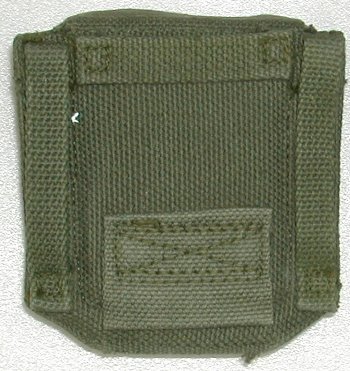
Rear view of the compass case illustrating the loops for attaching to the Waistbelt.

Interior view of the compass case showing the felt padding.

Typical Prismatic Compass of the period.
WE'51 Brace Attachment
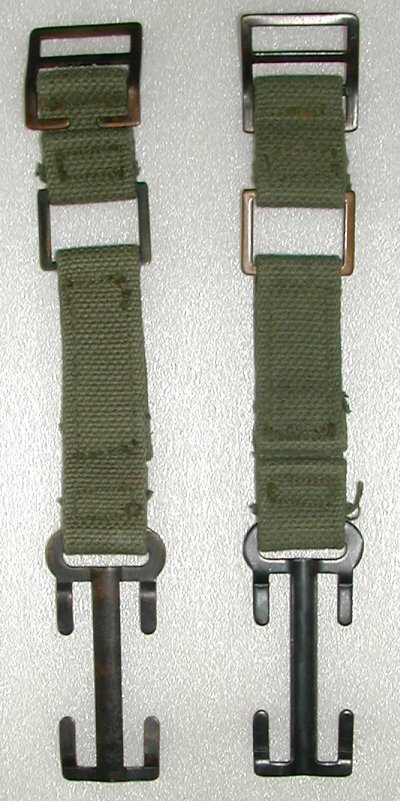
Front and rear view of the Brace Attachment. Issued in pairs, the Brace Attachment was identical to the WE'37 Brace Attachment except for the colour of the material. Brace Attachments were popularly known by the troops as "cheaters".
WE'51 Pistol Holster

1951 Pattern holster for the Browning Hi Power pistol. Note the external spare magazine pouch.
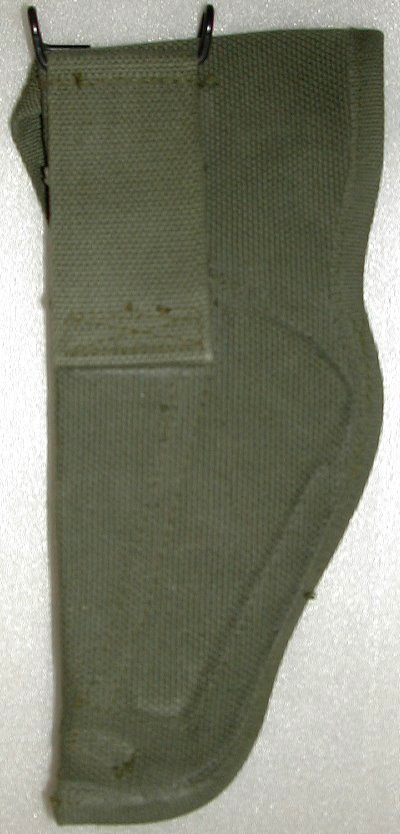
1951 Pattern holster back view.
Related Equipment Items
WE'51 Gas Mask Carriers
Several patterns and variations of gas masks and carriers were issued with WE'51. Both the GS Pattern Respirator and the Light Respirator of Second World War vintage appear to have been worn concurrently, the Light Respirator eventually replacing the GS Pattern. All of the patterns have pockets for storing items such as anti-fogging paste, matted yarn waste, cleaning rags, cap and cannister plugs and a chemical detection and treatment kit.


Front and back views of the WE'51 Pattern Carrier for the Light Respirator.

The Light Respirator Carrier as worn on the waistbelt. A sling was provided which could be clipped to the rings on the sides of the Carrier allowing the Respirator to be worn by itself.


Front and back views of the second pattern of Carrier. This was based on an American design and was very successful. With modifications, this general pattern is still in use. The sling is permanently attached.
Canadian Pattern X57A Entrenching Tool Carrier

The Experimental Canadian Pattern X57A Entrenching Tool Carrier was a close copy of the U.S. M1956 Intrenching Tool Carrier. The Canadian Carrier even duplicated the attachment points for the U.S. bayonet scabbard. The version adopted by Canada omitted these fittings and had a different pattern of snap fastener.

Rear view.
WE'51 Entrenching Tool and Carrier



The WE'51 Entrenching Tool Carrier.
The Canadian Entrenching tool was a direct copy of the American M1951 Intrenching Tool. The pattern was in use by Canada into the 1980s until replaced by the Pattern 1982 folding shovel.





WE'51 Small Pack


If you accessed this page from an outside link or search engine and do not see a navigation bar on the left side of the page, click HERE to go to the Canadian Military Police Virtual Museum main page.






























































